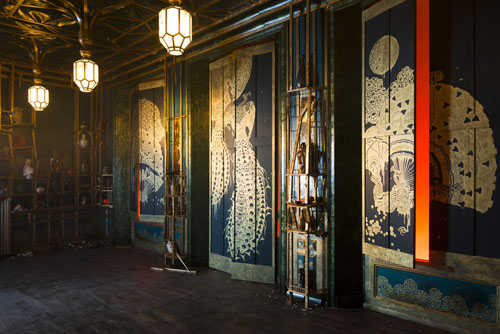
The Massachusetts Museum of Contemporary Art (Mass MoCA) just got some great news. Governor Deval Patrick has approved a capital facilities bond bill that includes an award of $25.4 million in state funding for a renovation of the museum’s 26-building campus and an expansion of its exhibition space that will add 120,000 square feet, nearly doubling its current gallery space.
According to the New York Times, Mass MoCA broke its attendance record last year with 162,000 visitors, and hopes the expansion will bring even more visitors to the former Civil War-ear cotton printing factory and help boost the economy in struggling North Adams. The arts complex takes up roughly one-third of the city’s downtown business district.
Nestled in the Berkshires near the recently-reopened Clark Art Institute, the museum is known for being a platform for the performing arts (David Byrne presented his Imelda Marcos-inspired opera Here Lies Love for five nights in 2012) and for hosting long-term exhibitions like Sol LeWitt’s “A Wall Drawing Retrospective” (which is on a 25-year loan), and an exhibition of paintings and sculpture by Anselm Kiefer, for which the museum opened a 10,000-square-foot building in 2013, repurposed specifically for Kiefer’s works, which will be on view for at least the next decade.
In July, Mass MoCA director Joseph Thompson told artnet News (see “Mass MoCA Awaits Vote on Its Huge Expansion“) that he envisions the new space as a home for two or three more long-term exhibitions, a plan which would help the non-collecting institution skirt the costs associated with a permanent collection while still allowing it to provide the public with works that could be visited again and again.
Currently on view at the museum, on a shorter run, are Teresita Fernandez’ “As Above So Below,” Ann Hamilton’s “Paper Chorus,” and Darren Waterston’s ambitious “Uncertain Beauty,” at the heart of which is the installation Filthy Lucre, a re-imagining of James McNeill Whistler’s 1876 decorative achievement The Peacock Room, which serves partly as a sumptuous comment on excess and includes a soundscape by the New York band Betty.